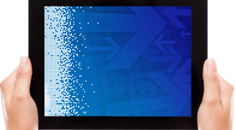Latest News
Using Technology to Promote Transparency in Public Works

By Melissa Girtz, RTVision
In recent years, transparency has become a growing trend and promoted at all levels of government. Whether it's due to American's increased interest in the economy and government spending, or because of the Internet fueling our ever-increasing desire for on-demand news and information; the term 'Open Government' is quickly becoming more policy than practice.
In 2002, the e-Government Act was passed, establishing guidelines and recommendations for using Internet-based technology to provide access to government information and services. Since then, technology has been trickling down through the levels of government, giving people the ability and convenience of using a home computer to do everything from submit taxes, to watch live web broadcasts of the House and Senate debates.
As federal and state agencies have been morphing into 'e-Government', so too have local government agencies been moving in the same direction. However, at the local government level, there is still a great discrepancy in the use of technology, from one agency to another.
So what are some of the ways Minnesota local government is using technology, specifically in public works departments, to not only provide convenience but also transparency? How do local governments accommodate the technological needs of the young generations who have grown up with a smart phone in their pocket and a computer in the classroom, without forgetting about the generations who grew up with slide rules in their classroom?
Websites, social media, email notifications, online portals, and web-based applications -- these are all ways that local public works departments can provide services to the public, as well as provide accountability.
Now that fall is upon us and snow will soon be on the ground, public works departments can use a combination of website, social media, and email notifications to make the public aware of snow emergencies and road maintenance.
In addition, through the use of GPS and electronic timecards, agencies can track detailed costs on routes plowed, including labor hours, equipment miles, and inventory usage.
Permits, that for years have been filled out on paper and saved in filing cabinets, can now be created, approved, paid for, and filed electronically -- creating convenience for the public, as well as better accountability for transactions, permit history, and enforcement.
On the construction side, there a number of ways to provide information to the general public, as well as to vendors.
Posting plans online, utilizing electronic bidding, and sending out road detour information over social media, email notifications, and online sites are two of the easiest ways to provide project transparency. This not only allows the general public to have 'real-time' knowledge of project updates that may affect their daily routines, but it also provides greater project visibility to potential vendors, in turn leading to more competitive bids.
How can you implement technology into local government without discriminating against those who do not have access to Internet, computers, or smart phones? Or against those who are not proficient in the use of technology?
The US Census found, in 2011, that 75 percent of U.S. households had a computer. Although that number grows each year, that still leaves some without access to technology.
To accommodate those individuals, many local government offices now have free, public WIFI and some even provide computer kiosks in city hall or county offices, as a way to encourage e-Government and compliment the use of their electronic applications.
In addition, various community outreach programs provide basic computer courses in libraries, community centers, and employment offices. And there are numerous programs that provide refurbished computers and discounted basic Internet to those that qualify.
Technology is certainly not going away. It continues to evolve, expand, and has become a part of everyday life.
In order to accommodate the changing needs and demands of constituents, local government should look towards technology as a way to efficiently provide information, engage the public, and promote transparency.
For more information, contact Melissa Girtz, RTVision. Email: melissag@rtvision.com. Phone: (651) 592-1180. Website: www.rtvision.com.
What's New
-

Young Professionals Spotlight
March 25, 2024
-

APWA-MN Education Programs
March 25, 2024
-
Apply for the Young Professionals Stipend: Attend PWX Atlanta
February 23, 2024



